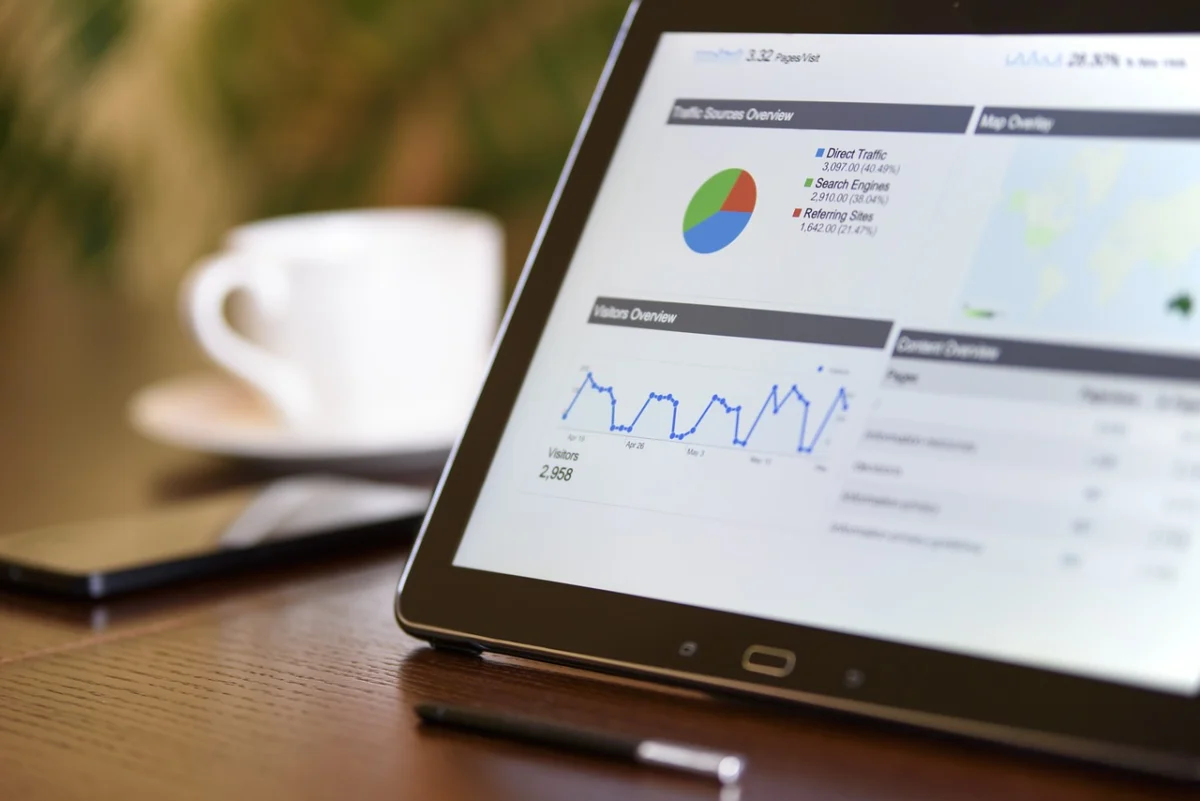When trying to grow your business online, one of the most important decisions you’ll make is how to allocate your marketing budget—and two strategies dominate the conversation: SEO (Search Engine Optimisation) and PPC (Pay-Per-Click advertising).
Each approach has its strengths, and both can drive real results—but they work differently, require different timelines, and deliver ROI in distinct ways. For many Australian businesses, the question isn’t just “Which is better?” but rather, “What’s right for my business right now?”
This guide breaks down the pros, cons, and key differences of SEO vs PPC, with examples and insights to help you make the smartest decision based on your goals, budget, and timeline.
Understanding the Basics: SEO vs PPC
Before we dig into the strategy, let’s define the two:
- SEO (Search Engine Optimisation) is the process of improving your website’s visibility in organic (non-paid) search results. It includes technical optimisation, content creation, and link-building to help your site appear higher in Google for relevant search terms.
- PPC (Pay-Per-Click) advertising—typically via platforms like Google Ads—lets you pay to appear at the top of search results for chosen keywords. You’re charged each time someone clicks on your ad.
In short, SEO builds long-term value, while PPC delivers fast, paid visibility.

The Key Difference: Timing and Longevity
Let’s get to the core of the issue—timing. This is where the real divide between SEO and PPC lies.
- SEO is a long-term investment. It may take 3–6 months (or more) to see significant results. But once your site ranks well, it can bring in traffic 24/7 without ongoing ad spend. Think of it like building a property: it takes time to construct, but once it’s done, you own the traffic it attracts.
- PPC is immediate but temporary. With Google Ads, your listing can appear at the top of the page within hours—but the second you stop paying, you vanish from the results. It’s like renting a billboard: visible while paid for, gone when the budget dries up.
Australian brands across all sectors use these strategies in different ways. You might notice a major retailer bidding aggressively on Google Ads for seasonal promotions, while their blog content slowly climbs the SEO ranks for evergreen topics like “best kitchen appliances.” The combination is deliberate.
Pros and Cons of SEO
✅ Pros of SEO:
- Long-Term ROI – After the initial investment, SEO traffic is free.
- Brand Authority – Ranking well organically builds trust with searchers.
- Sustainable Traffic – With consistent effort, traffic doesn’t disappear overnight.
- Better Click-Through Rates (CTR) – Organic results often get more clicks than ads, especially in Australia where users are savvy and skip ads.
❌ Cons of SEO:
- Takes Time – Results may take months to appear.
- Requires Ongoing Work – Google’s algorithm changes constantly, and your competition won’t sit still.
- Upfront Costs – SEO services (especially from an Australian digital agency) may seem costly upfront due to the time-intensive work involved.
Pros and Cons of PPC
✅ Pros of PPC:
- Immediate Results – Perfect for launching new products or seasonal offers.
- Precise Targeting – Reach users based on location, device, time of day, or behaviour.
- Scalable – Increase or decrease ad spend at will.
- Clear Data – Easy to track conversions, costs, and ROI.
❌ Cons of PPC:
- Costs Add Up – You pay for every click, even if the visitor doesn’t convert.
- No Long-Term Asset – Once the budget stops, so does the traffic.
- Ad Fatigue – Users may ignore your ads over time, especially in competitive markets.

When to Use SEO vs PPC (and When to Use Both)
So how do you choose between SEO and PPC for your business? Let’s break it down based on scenarios that might apply to you.
Use SEO when:
- You’re planning for long-term growth and want sustainable, low-cost traffic over time.
- You want to build authority in your niche through content and thought leadership.
- You have time to let your investment grow.
- You’re a local business wanting to rank for location-based terms (e.g. “plumber in Newcastle” or “web designer Adelaide”).
Use PPC when:
- You need fast results—like during a sale, event, or product launch.
- You’re testing a new product or offer and want immediate feedback.
- You have a limited window of opportunity (e.g., seasonal business).
- You want to appear for ultra-competitive keywords that would take years to rank for organically.
Use both when:
- You want fast visibility and long-term presence.
- You’re building brand awareness while your SEO matures.
- You want to dominate the search results by appearing in both paid and organic listings.
Many Australian companies combine strategies. For instance, a local tourism brand might run PPC campaigns to attract peak-season traffic while slowly building SEO content about off-season travel tips or local guides.
Working with a Local Digital Marketing Agency in Australia
If you’re unsure where to start, this is where a local digital marketing agency can make a world of difference. While offshore services might be cheaper, a local agency understands your audience, speaks your language (both literally and culturally), and knows how Aussies search and click.
Plus, a local partner can help you scale:
- Start with a PPC campaign to generate leads fast.
- While that’s running, they build out an SEO strategy that pays off over the long term.
- Over time, reduce your ad spend as organic traffic takes over.
Choosing a partner that offers both SEO and PPC services under one roof (like many of the top-rated agencies listed on LocalWebExpert.com.au) helps you avoid conflicting strategies and maximises your return.
Think Strategy, Not Silos
The truth is, it’s not about SEO vs PPC—it’s about what your business needs now.
If you’re launching something new or need results tomorrow, PPC can get you there. If you want steady, compounding returns over the next year, SEO is the clear winner. And if your budget allows, the real magic is in combining both—using PPC to fill the gap while your SEO strategy matures.
Don’t treat them as opposing forces. Treat them as complementary tools in your digital marketing toolkit.
And if your budget is tight? Scale between the two. Start with PPC for lead flow, and as revenue grows, invest in SEO to lower your long-term customer acquisition cost.
Whatever your situation, the most effective strategy is one tailored to your goals—and often, that means partnering with a trusted local expert who understands the Australian market and can guide you on when to press “go” on ads or double down on SEO.
Frequently Asked Questions (FAQ)
1. What is the main difference between SEO and PPC in digital marketing?
The main difference between SEO and PPC is timing and cost structure. SEO focuses on improving your website’s organic rankings over time, delivering long-term traffic without ongoing ad spend. PPC (like Google Ads) delivers immediate traffic, but you pay for every click—and the traffic stops when your budget runs out.
2. Should small Australian businesses invest in SEO or PPC first?
If you’re a small business in Australia with limited budget, PPC is great for short-term lead generation. However, investing in SEO early helps build long-term online visibility. Many local businesses start with PPC and scale into SEO for sustainable traffic.
3. How long does SEO take to work compared to Google Ads?
Google Ads (PPC) can drive traffic to your website within hours of launching a campaign. SEO services, however, usually take 3–6 months to see meaningful improvements in rankings and traffic. The benefit of SEO is that results compound over time and don’t require ongoing payments per click.
4. Is PPC advertising worth it for Australian service businesses?
Yes—PPC advertising in Australia is especially effective for service-based businesses (like tradies, accountants, or consultants) who need fast leads. It works well for targeting customers in specific postcodes or cities and can be tracked in real-time for ROI.
5. Can I do both SEO and PPC at the same time?
Absolutely. Many businesses run PPC and SEO strategies in tandem. PPC brings in traffic right away, while SEO builds over time. This “hybrid” approach allows you to generate leads while your long-term organic presence grows, offering the best of both worlds.
6. How much should I budget for SEO vs PPC in Australia?
There’s no one-size-fits-all, but a typical Australian business might invest $1,000–$3,000/month for SEO services, and $500–$5,000/month on PPC, depending on goals and competition. A local digital agency can help you structure a budget that aligns with your business stage.
7. Do SEO services in Australia include Google Ads management?
Not always. Some Australian SEO agencies offer both SEO and PPC services, while others specialise in one. If you’re considering both strategies, choose a local agency that can manage SEO and Google Ads together to ensure they complement rather than compete.
8. Is SEO better for local businesses than PPC?
For local businesses in Australia, SEO offers long-term value by helping you rank in Google’s local map pack and organic results. However, PPC can still be useful—especially for seasonal promotions or to appear in front of customers in nearby suburbs. The most effective strategy often blends both.
9. How do I choose a local digital agency for SEO or PPC?
Look for an Australian digital marketing agency with experience in your industry, strong case studies, and transparent reporting. Ask if they can customise your campaign for local search, and if they understand how to scale SEO and PPC depending on your budget and business goals.
Need help deciding what’s right for you?
Local Web Expert connects you with trusted Australian digital agencies that specialise in both SEO and PPC strategies. Find the right partner today.

